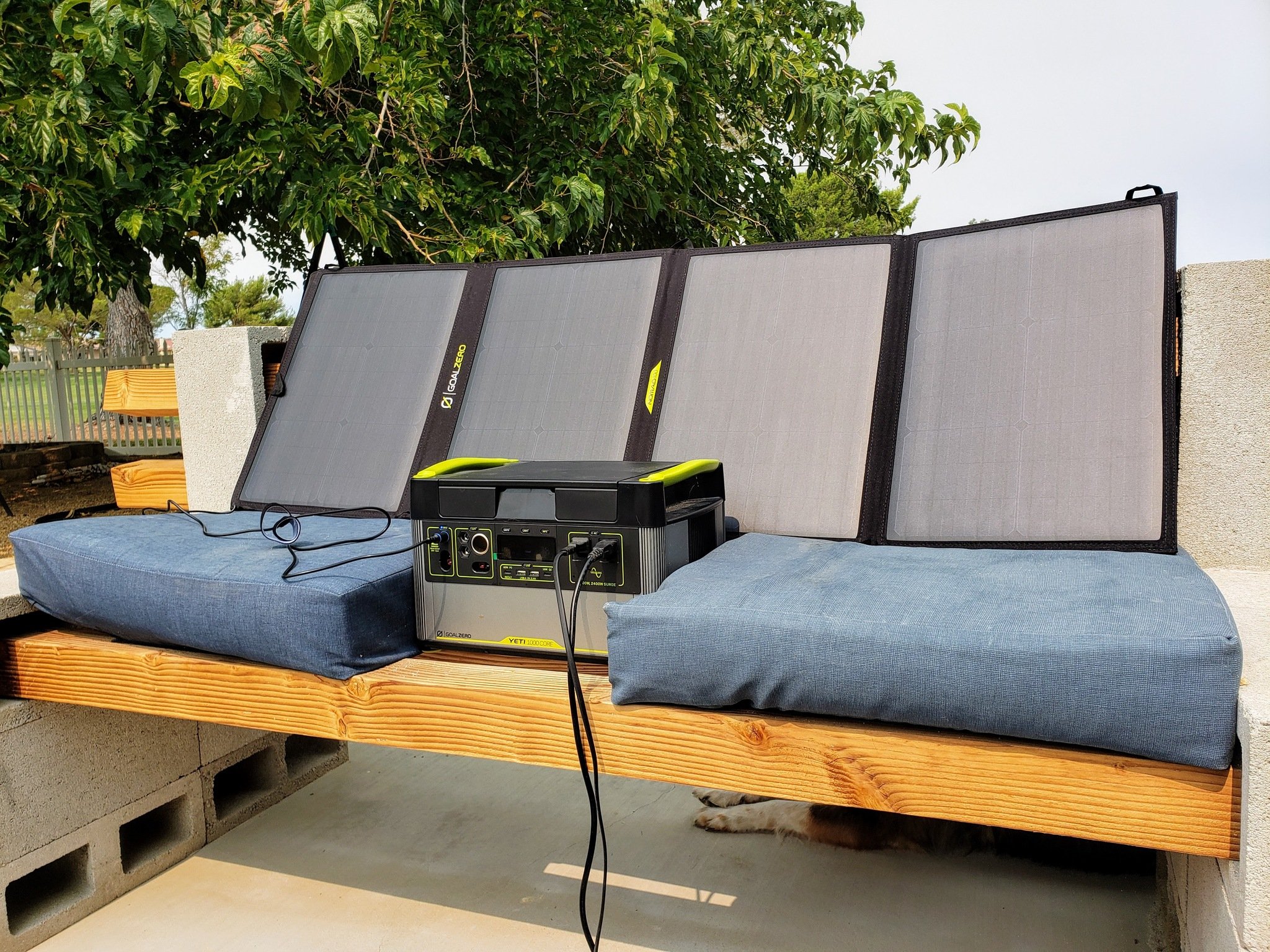Android Central Verdict
Bottom line: The Goal Zero Yeti 1000 is an excellent solar generator, and the solar panels are light and easy to carry. I wish the same could be said for the battery, but it's a good buy if you can stand the weight.
Pros
- +
Solid construction
- +
Lightweight solar panel
- +
Room for charging brick inside
- +
High-speed USB charging ports
Cons
- -
Incredibly heavy
- -
Only two AC outputs
- -
Super expensive for the package
Why you can trust Android Central
It seems I have become the unofficial reviewer of solar generators here on Android Central, and it is a role I am happy to play. Goal Zero, makers of one of the best portable chargers & power banks we've used, reached out to me and asked if I could review its Amazon exclusive Yeti 1000 Core, a giant battery pack that it claimed had enough juice to power your fridge.
I've spent several weeks with the Yeti, taking it camping, using it for day trips to the lake, as well as powering my home appliances. Goal Zero also sent me the solar panel and the 230-watt power supply to get the whole experience, and having that solar panel makes all the difference. As a unit, the Yeti 1000 and the Nomad 100 solar panel are an excellent choice for your portable power needs. However, you're going to need to put in some effort to lug it to your destination.
Goal Zero Yeti 1000 Core: Price and availability
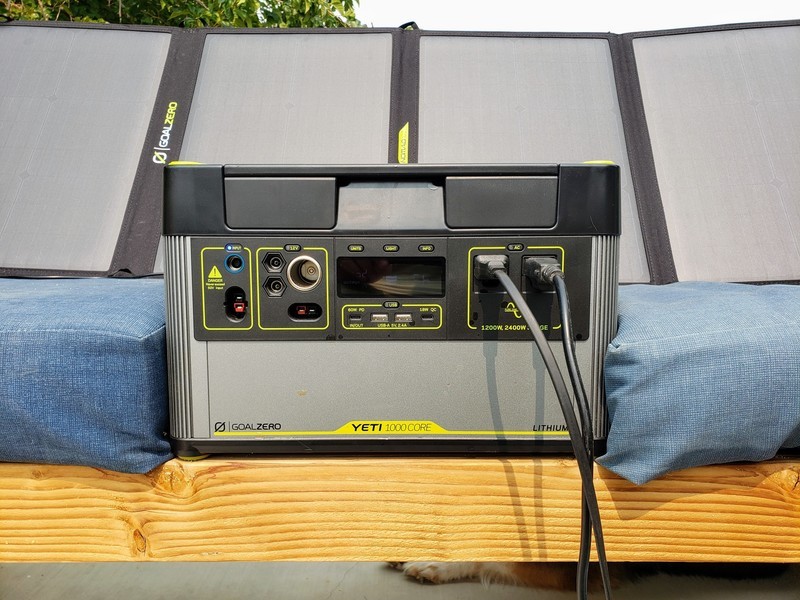
Because the Core version of the Yeti 1000 is exclusive to Amazon, that is the only place you can buy it. However, the stock is constantly available because of that, and the price hasn't changed since July 2021.
The Yeti on its own is $1,000, but I would recommend buying the Nomad 100 to go with it since having a solar panel while outside camping keeps your battery topped up and ready for the night. That's an investment of $1,400 for the panel and the battery, but it's a worthwhile one if you spend a lot of time out in the countryside camping or your RV.
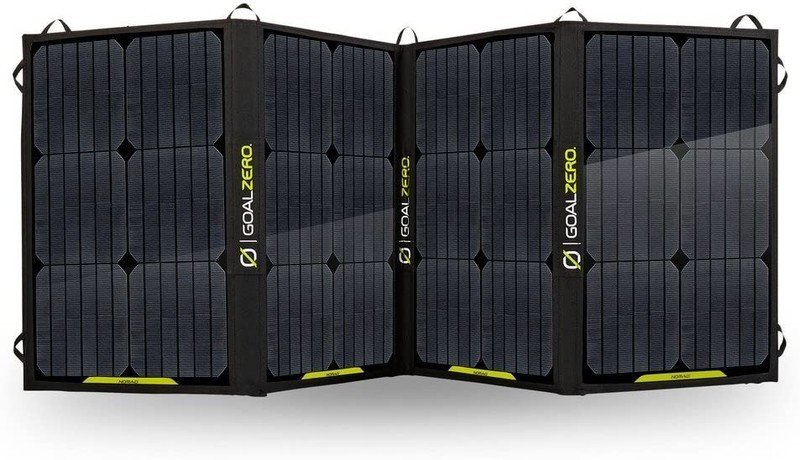
Goal Zero Nomad 100
The Nomad 100 is an excellent charging option for the Yeti 1000 that can also be used to charge your phone on its own. Take it to the beach to keep your phone or tablet topped up all day.
Goal Zero Yeti 1000 Core: What's good
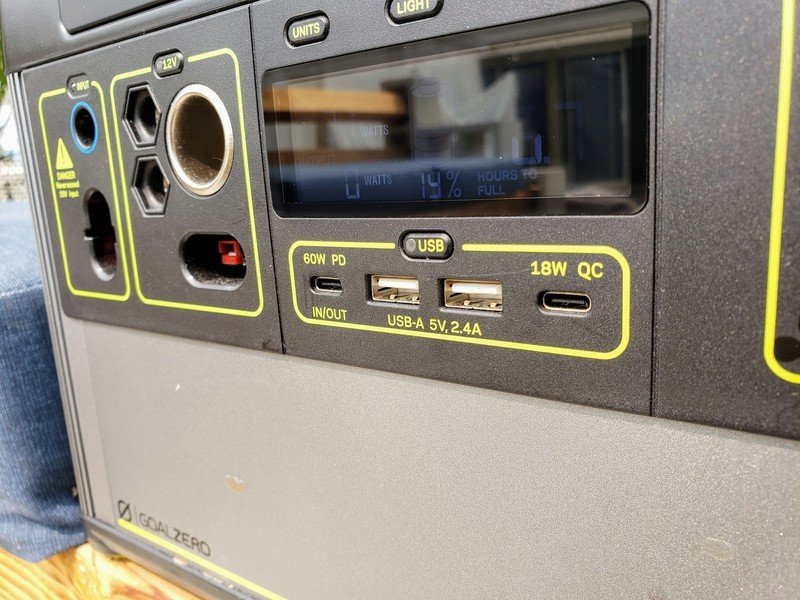
Like most solar generators, the Yeti 1000 core's greatest strength is its versatility. Because of the multiple inputs and outputs, you can charge any device you can think of, and set the Yeti up in just about every way. You can use solar power if you are out in the sun, a standard house outlet with the supplied power brick — or charge even faster with the optional upgrade — or even through your car's 12v charger. Whatever your power needs, the Yeti can help.
When it comes to outputs, the Yeti 1000 Core is made for your modern life. With two high-speed USB-C ports — one of them a 60w PD USB-C that's perfect for your laptop — and two 5v, 2.5 amp USB-A ports, the Yeti is capable of charging every modern phone and most modern laptops or Chromebooks with ease. All of the best Android phones will benefit from the highspeed ports and will make charging your devices quick and easy, even out on a campsite. As a bonus, you can use your 60w PD charger from your laptop in conjunction with the standard power brick to charge the Yeti as well, making it fill that battery a little quicker.
When it comes to outputs, the Yeti 1000 Core is made for your modern life.
While the solar panel I received is not bundled with the Goal Zero, it is a must buy if you will be using the Yeti 1000 while out camping or in an RV. The Nomad 100 solar panel is a lightweight four-panel charger that can be plugged into the Yeti and left to keep charging the battery all day while you use it. It allows you to keep the battery topped up throughout the day, so you have power all night. The Nomad is also great if you want something quick and easy to power your phone while on the beach or a hike.
Unfortunately, taking the Yeti may not be possible on short trips or ones with a lot of walking. The Yeti is a chunky boi, there is no denying it. It weighs in at just over 31 pounds, which is heavy even when compared to other solar generators in its class. The build quality is fantastic, though, with a mix of metal for the handles and frame and plastics for the casing. It feels strong enough to take some beating in the back of a work truck or stowed with a load of heavy camping gear. Even the lid where the power brick is stored is made of a thicker plastic than you might have thought, so it isn't likely going to crack or split.
Goal Zero Yeti 1000 Core: What needs work
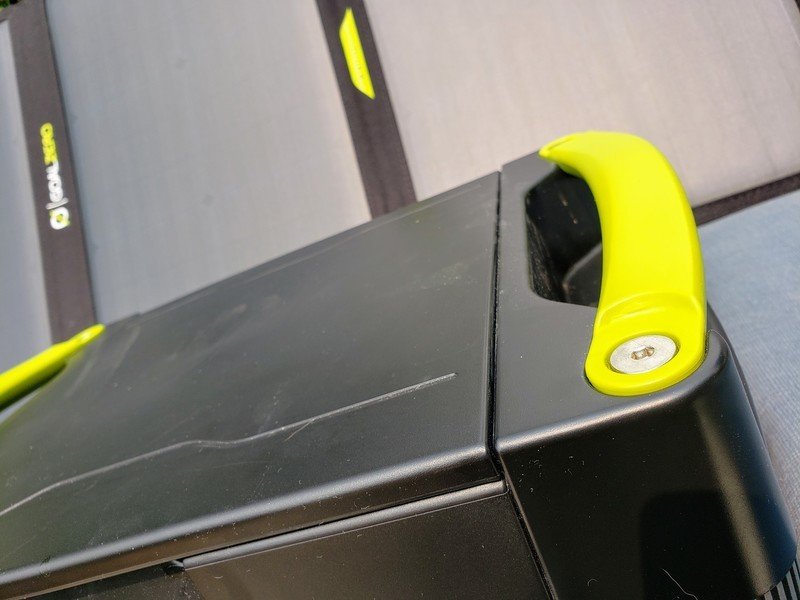
There isn't much wrong with the Yeti 1000 Core. The biggest downside I can see is the weight, which is only a downside if you look to move it around constantly. All solar generators are heavy, but the Yeti is the heaviest I have tried. Even generators with bigger batteries weigh less than the Goal Zero, and that shouldn't really happen. Thirty-one pounds is already hefty, and adding the extra three or four pounds of the charging block makes this an uncomfortable experience.
That weight is also odd when the Yeti has one less AC outlet than its competition. While having four high-speed USB-C means your modern devices can be quickly charged, you will need to choose which of your older appliances you want to run. If you have a fridge, floodlight, and hotplate you want to run, you'll have to cut one of those out. While two AC outputs isn't a deal-breaker, I would have liked to see a third on a generator this big.
Goal Zero Yeti 1000 Core: Competition
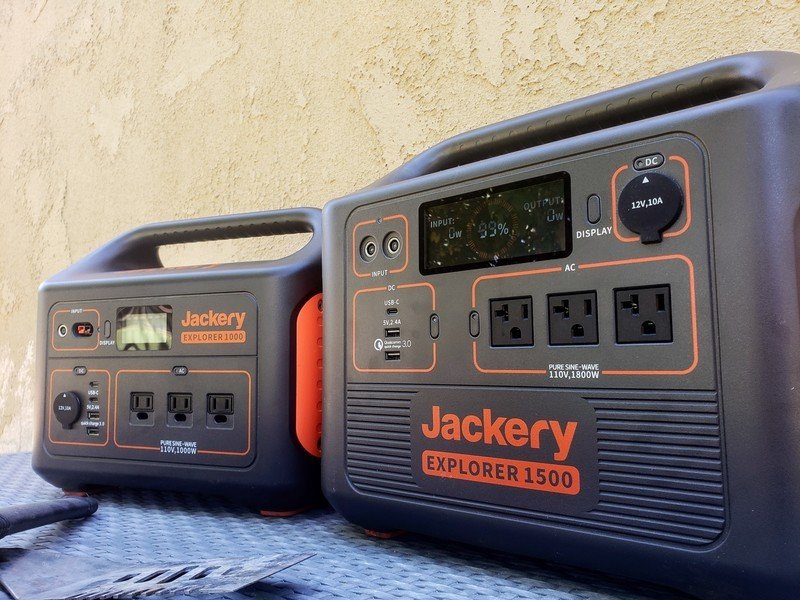
One of Goal Zero's direct competitors, Jackery, also makes a 1000w battery. Called the Explorer 1000, the Jackery model weighs a little less while managing to fit an extra AC outlet for you. However, the Explorer feels less rugged, and the plastic casing doesn't feel like it could take as much punishment as the Goal Zero. If you are on a worksite, the rugged Goal Zero would be a better choice.
Goal Zero Yeti 1000 Core: Should you buy it?
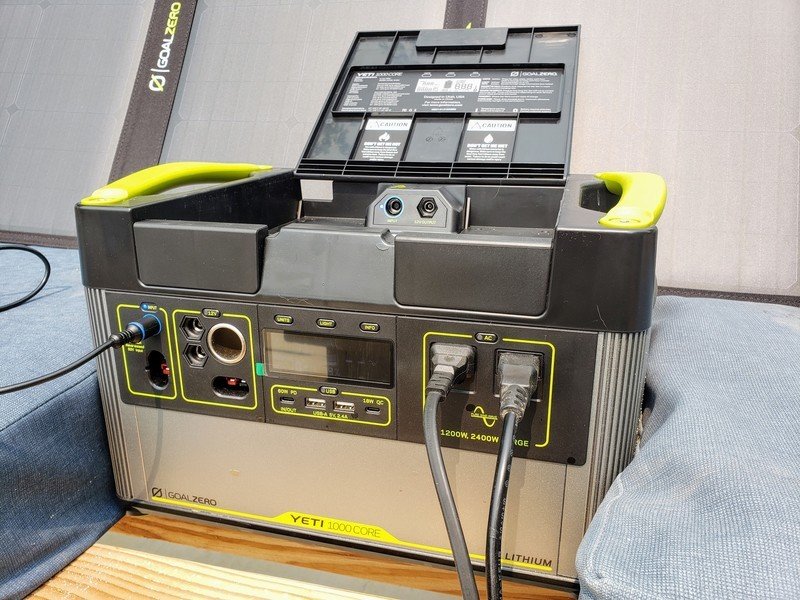
You should buy this if...
- You are looking for extra power on your RV vacation
- You want a lot of ways to charge it
- You need USB output more than AC
You shouldn't buy this if...
- You are only going hiking
- You plan on using AC outlets
While the Goal Zero Yeti has everything you need to keep your devices fully charged, it is a cumbersome beast to carry around. If you are going camping at a campsite — somewhere you will stay for the week — then the Yeti 1000 is excellent. You can set it up and leave it in position the whole week and not have to worry. If you are looking to go hiking or changing your campsite every day, the heavy Yeti may not be suitable for you.
4 out of 5
I enjoyed my time with Yeti 1000 Core, and I think the addition of the solar panel makes it a great package. I did feel the weight was an issue, and the choice to only allow for two AC outputs made it less versatile than it could be. However, you don't need to plug your Chromebook, tablet, or phone into an AC outlet when the USB ports are high-power and fast charging.
The Yeti feels like it would be great for keeping inside your RV or trailer, so you have it available for your trips away. While the RV can power everything inside, the Yeti and Nomad solar panel can keep everything outside running, leaving you free to enjoy the outdoors.
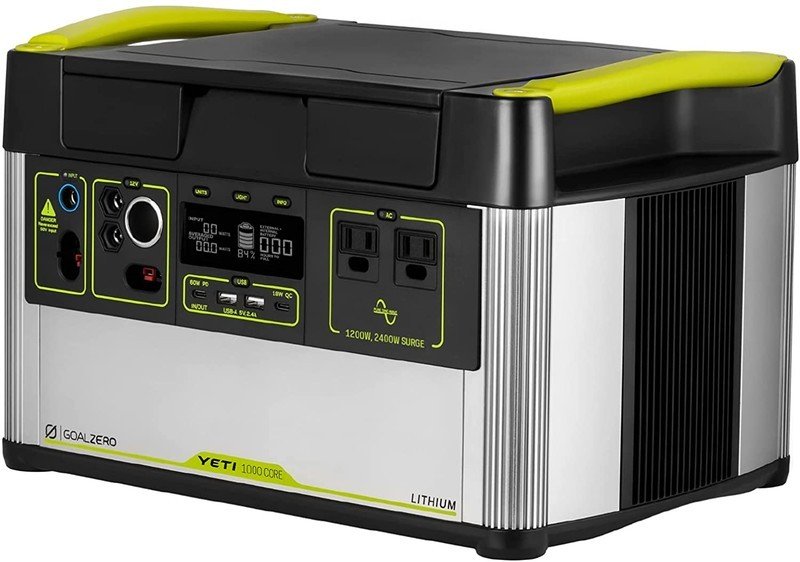
Goal Zero Yeti 1000 Core
Bottom line: The Yeti Core is a beast of a battery, but coupled with an excellent solar panel, it can keep you powered for as long you need.
